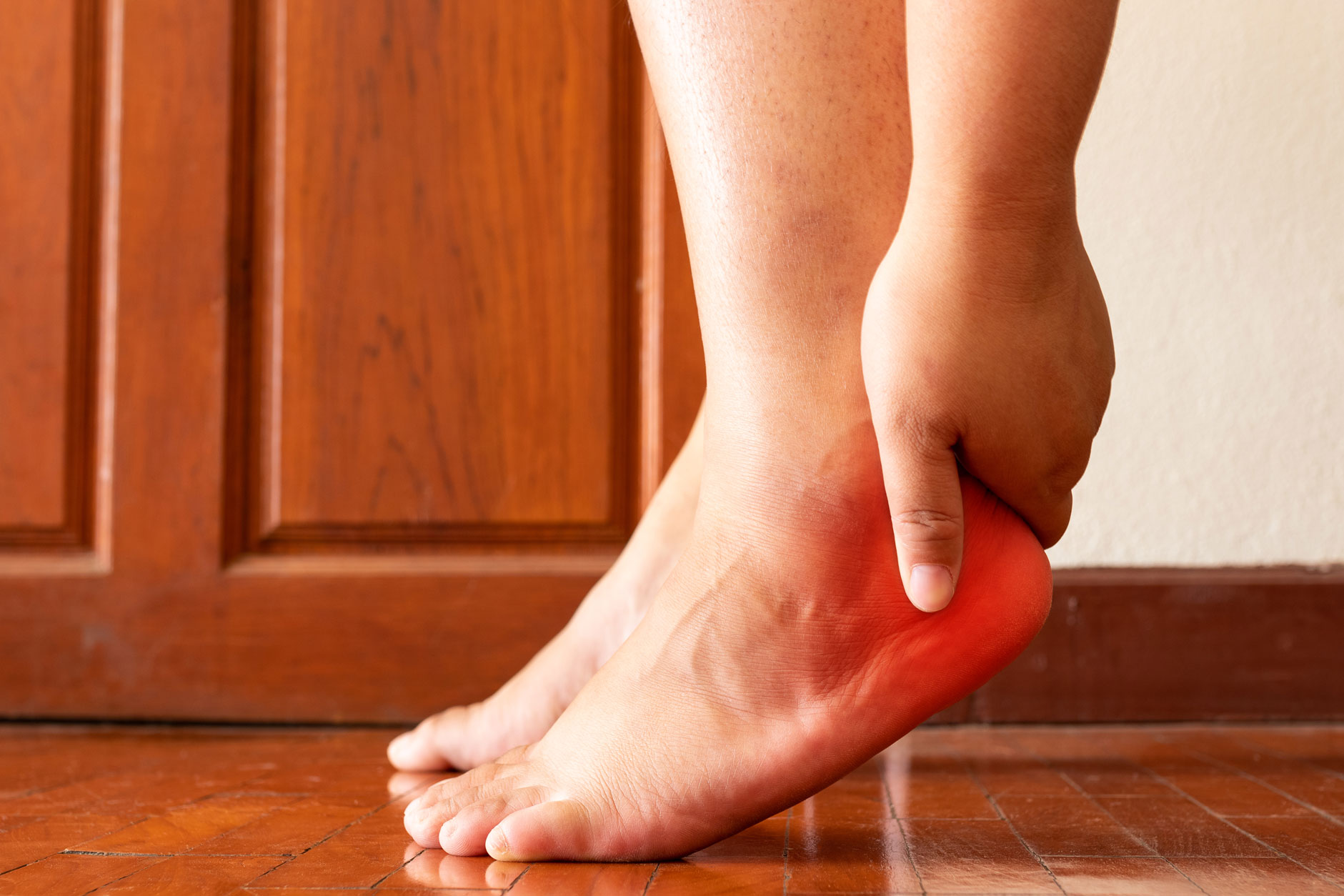
Plantar Fasciitis
Plantar fasciitis is the most common cause of heel pain and affects around 10% of the US population. For most people, the pain is mild and helped by resting, stretching and changing footwear – but a fifth of patients need further treatment.
The plantar fascia is the band of ligament underneath the skin on the sole of the foot which acts as a shock absorber and supports the arch. If overloaded, it can degenerate and tear, leading to pain known as plantar fasciitis.
Once diagnosed, and if rest and stretching haven’t worked, then a doctor may recommend steroid injections, shockwave therapy or surgery. But there is an alternative.
Radiotherapy for Plantar Fasciitis
Radiotherapy is a simple and non-invasive treatment that is proven to significantly improve symptoms or delay the need for surgery or other invasive treatments. Radiotherapy reduces heel pain for over 80% of patients with plantar fasciitis, allowing you to get on with daily life.
Radiotherapy is the use of radiation (for instance with X-rays) to treat disease. Using very low doses, radiotherapy creates an anti-inflammatory effect and triggers the body’s natural healing response. By targeting the heel and foot, we can reduce both the inflammation and the pain caused by plantar fasciitis.
Apart from occasional very minor skin redness, there are rarely any other side-effects
How the treatment works:
Initial consultation: The doctor will discuss your condition with you and will discuss the other treatments you could try as well as the benefits and possible side-effects of radiotherapy. If radiotherapy is the way forward, you’ll need to sign a consent form as part of the booking process.
Planning appointment: Your doctor will request a planning CT (computed tomography) scan which will allow us to precisely target the inflamed area. They will use a special positioning bag around the foot to keep it stable and the treatment accurate. From there, your consultant will plan the radiotherapy treatment so that it is precisely directed towards the problem regions.
Treatment: You’ll generally be given six treatments over three weeks. When you come in for each treatment, you’ll be positioned underneath the radiotherapy machine. The treatment is entirely painless and the appointment takes around 10 minutes. You can leave straight after treatment and will be able to drive and do normal work or household tasks.
Follow-up: We’ll call to see how you’re feeling and discuss any issues. Three months after your treatment we’ll see you to assess how things have gone. If your pain has not significantly improved, you may be offered a further course of treatment in order to maximise the effect of the radiotherapy.
Book Appointment
Fill out the form and a member of our staff will get back to you in the next 24-48 hours.
Conditions We Treat
FAQ
Most Commonly Asked Questions
You shouldn’t feel any pain during your radiotherapy treatment, however, you may be a little tired afterwards.
The indications for radiotherapy depend on the particular condition that you have. Your doctor will discuss whether radiotherapy is the right treatment for you, explaining the effectiveness and the side-effects involved.
A physician referral is generally needed if you are using private medical insurance. If you are self-funding then generally you do not need a referral letter, although we will routinely send a copy of any letters that we write to your physician, for instance, a record of the consultation and the treatment.
You may experience some minor side effects after radiotherapy treatment. Your specific risk will be discussed with you during your initial consultation. During your treatment, you shouldn’t experience any pain, drowsiness or dizziness.
It’s important to note that the radiation dose is much lower than radiotherapy treatment for cancer, so that side effects tend to be mild.
There don’t tend to be any side-effects apart from occasional very minor skin redness.
For Plantar Fasciitis there are no expected significant long-term side-effects.
While there is a theoretical risk of developing a cancer in the skin around the treated area, the risk is very small.
For a 50 year old, the life-time risk of developing a type of skin cancer in the treated region is in the region of 0.1% (1 in 1,000 patients). The risk of cancer will be slightly higher if you are younger and lower if you are older at the time of treatment. Your specific risk will be discussed in detail with your consultant.
Since the radiation is precisely targeted at the area, this avoids unnecessary exposure to the rest of your body and so there is no increase in cancer risk outside of the treated area.
If you have any concerns during your treatment, your radiographer or consultant will be available to answer your questions at any time.

